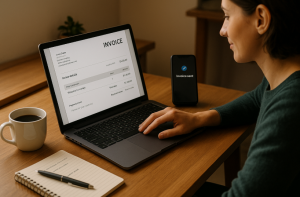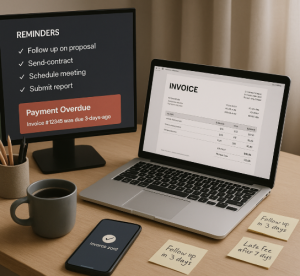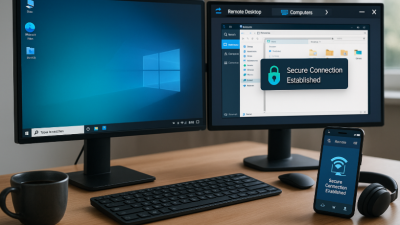You could be the most talented web designer, illustrator, writer, or developer on the planet — but if your invoicing game is weak, guess what? You’re gonna get paid late, or worse, not at all. A lot of freelancers treat invoices like an afterthought. “I’ll just send a quick message with the amount,” they think. And then a month later, the client mysteriously forgets they ever hired you. Classic.
Invoices aren’t just paperwork — they’re your financial armor. A well-crafted one tells your client, “Hey, I’m a professional, and I expect to be paid like one.” It lays everything out clearly: what you did, how much it costs, when it’s due, and how to pay. No room for excuses, no awkward follow-ups (well, fewer at least).
What a Good Invoice Should Actually Include
Okay, so how do you make one that looks legit and doesn’t scream “made in MS Paint”? There are a few must-have details that not only make your invoice look clean but also help you get paid faster. Think of it like setting up a smooth handoff: no bumps, no questions, just results.

Here’s a quick breakdown of what every solid invoice should have:
- Your name or business info (email, phone number, maybe even your logo if you’re feeling fancy)
- Client’s details – So they can’t say, “Who’s this from again?”
- Unique invoice number – You’ll thank yourself during tax season
- Project description – Keep it clear but not too long — “Website redesign for homepage and blog” sounds better than “stuff”
- Itemized list of services – Transparency = trust (and fewer disputes)
- Total amount due – Obvious, but easy to overlook if you’re rushing
- Payment terms – Net 7, Net 15, Due upon receipt, etc.
- Payment methods – Bank transfer, PayPal, Wise, crypto? Let them know!
A little bonus? Add a friendly note. “Thanks for your business!” or “Always a pleasure working with you” can go a long way.
Templates That Don’t Suck (And Don’t Cost Anything)
There’s no shame in using a template — we’re freelancers, not layout designers (unless you are, in which case: hats off). The internet’s full of free invoice templates that are clean, customizable, and — best part — ready in minutes.
Before diving into platforms, let’s get one thing straight: you don’t need to reinvent the wheel. Just pick a layout that looks clear, not cluttered, and lets you drop your info in easily.
Here are some no-fuss places to get started:
- Google Docs & Sheets – Great for collaborating or sending over links. Plus, cloud storage!
- Canva – Surprisingly useful for invoices. Choose a template, drag in your logo, done.
- Wave – Free invoicing software with built-in tracking and automatic reminders.
- Zoho Invoice – Slick interface and no cost for most solo freelancers.
- Notion – With the right setup, you can invoice straight from your workspace.
Pick the one that fits your style and workflow. Some folks love spreadsheets, others want a PDF they can attach and forget. As long as it’s readable and professional, you’re golden.
Automate or Die (Okay, Not Really — But Kinda)
If you’re still typing up every invoice manually, we need to talk. Automation doesn’t mean turning into a robot — it means freeing up your time so you can do, you know, the work people actually pay you for. And if you’re working with recurring clients or retainers, automation is a game-changer.
Modern tools can do things like:
- Auto-send recurring invoices on specific dates
- Track whether the client has opened the invoice
- Send polite reminders if the payment’s late (so you don’t have to be the bad guy)
- Integrate with your bank or accounting app for smoother bookkeeping
Platforms like Bonsai, FreshBooks, QuickBooks, and PayPal Invoicing all offer some level of automation. Set it once, tweak as needed, and let the robots handle the boring bits.
Avoid These Rookie Mistakes (We’ve All Been There)
| Mistake | Why It’s a Problem | Fix |
|---|---|---|
| Forgetting to include payment info | The client literally can’t pay you without it. | Always include bank details, PayPal link, or other payment method. |
| Not setting a due date | “Whenever” means “whenever I feel like it.” | State a clear payment deadline (e.g., Net 14 or Net 30). |
| Being too vague | Clients may dispute or delay unclear charges. | Provide detailed descriptions of services or deliverables. |
| Skipping invoice numbers | Hard to track payments, taxes, and disputes. | Use sequential, unique invoice numbers. |
| No follow-up system | Unpaid invoices can slip through the cracks. | Schedule polite reminders until payment is received. |
Payment Tips to Get Your Money Faster (Without Begging)
Let’s face it: getting paid on time is an art. And while most clients are totally cool, there’s always that one who “forgot” or “didn’t see the invoice” or “switched accounting systems last week.” Mmm-hmm. Sure.

Here’s how to give them fewer chances to delay:
- Send the invoice as soon as the work is done – Strike while the memory is fresh
- Make it super easy to pay – Offer multiple payment options if possible
- Use gentle reminders – Automated emails or a short message a few days before the due date
- Include a late fee policy – Doesn’t have to be aggressive, but it sets expectations
- Be confident – You provided value. Don’t be shy about collecting what’s owed
And pro tip: the more professional your invoices look, the faster people tend to pay them. Perception matters, even in spreadsheets.
Real Talk: Freelance Invoicing Isn’t Fun, But It Matters
You didn’t go freelance because you love paperwork. But invoicing is part of the deal. It’s how you turn your skills into actual income — and protect yourself if things ever go sideways.
The good news? You don’t have to be perfect. Just organized. Set up templates, use tools that take the load off your shoulders, and create habits that keep your cash flow steady. No more wondering where your next payment is or chasing down emails that end in “…oh sorry, meant to get back to you!”
Smart invoicing isn’t just about faster payments — it’s peace of mind. And that’s something every freelancer deserves.



